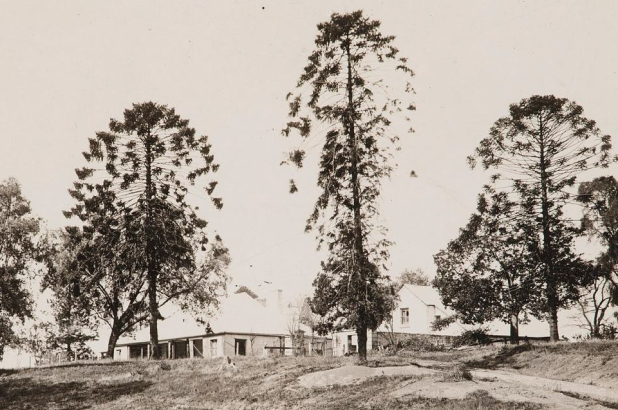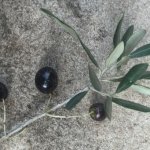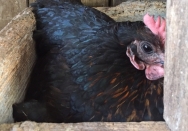Its that time of the year again, when the Bunya cones are falling – or at Elizabeth Farm at least the husks!
Back in 2015 (how the years fly by) you may remember I wrote about the corellas at Elizabeth Farm that every year flock to the trees to feast on the cones, so that we rarely ever see one of these ‘widow-makers’ actually on the ground. Most of the bunya-bunya trees (Araucaria bidwilii) date to the mid 19th century, and their distinctive silhouettes dominate this historic view:
View of Elizabeth Farm showing the 19th century bunya trees. Photograph by Mrs A.G. Foster, State Library of NSW PXA 182 image no21
The corellas are after the large, plump seeds – looking just like giant pine nuts – which are housed in individual husks, in turn contained within the larger and bright green cone:
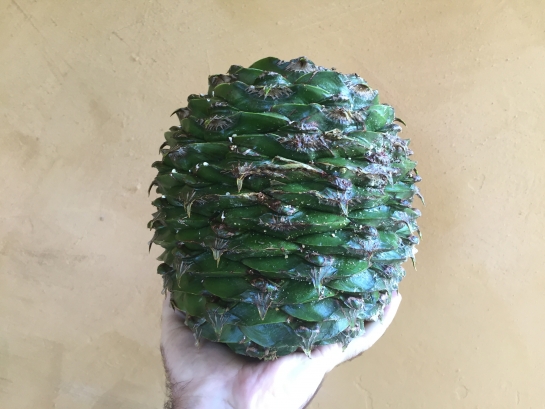
Freshly dropped bunya cone from Vaucluse House. Photo (c) Scott Hill for Sydney Living Museums
At Rouse Hill right now you can see a group of wonderful yellow-tailed black cockatoos (Calyptorhynchus funereus) feasting on actual pine nuts – which they tear out of the cones on the 19th century stone pines (Pinus pinea) that dominate the eastern edge of the garden.
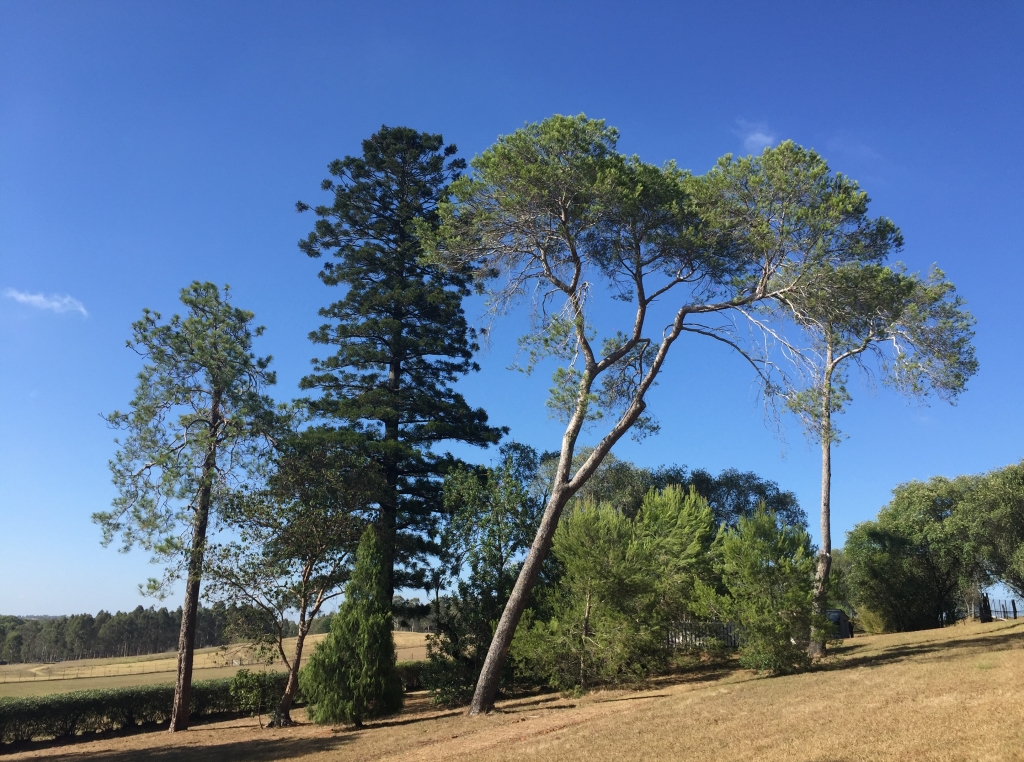
Stone pines in the east garden at Rouse Hill House (with a hoop pine behind). Photo (c) Scott Hill for Sydney Living Museums
Last week a group of us stood entranced at the sight of six of these eerie birds actually on the ground, not as usual in the trees, and balancing on one leg while the other held a pine cone that they systematically shredded.
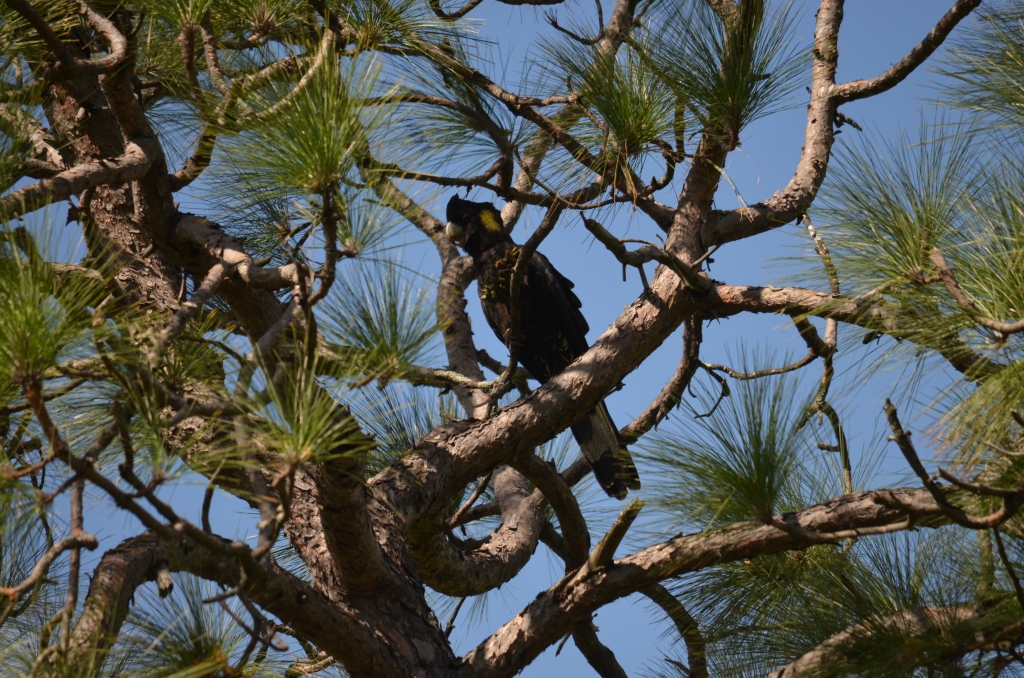
Black cockatoo at Rouse Hill House. Photo (c) Scott Hill for Sydney Living Museums
Hack and slash!
While we use an axe to get at them, or just wait a week or two until the cone begins the fall apart by itself, the corellas’ curved, pointed beaks easily shred a bunya cone, pulling out then tearing open the pod ends, so they can then devour the seed bit by bit at their leisure. Of all the husks I looked at, not a single bit of seed remained: there may be a bounty of cones up there, but the birds clearly aren’t letting any go to waste.
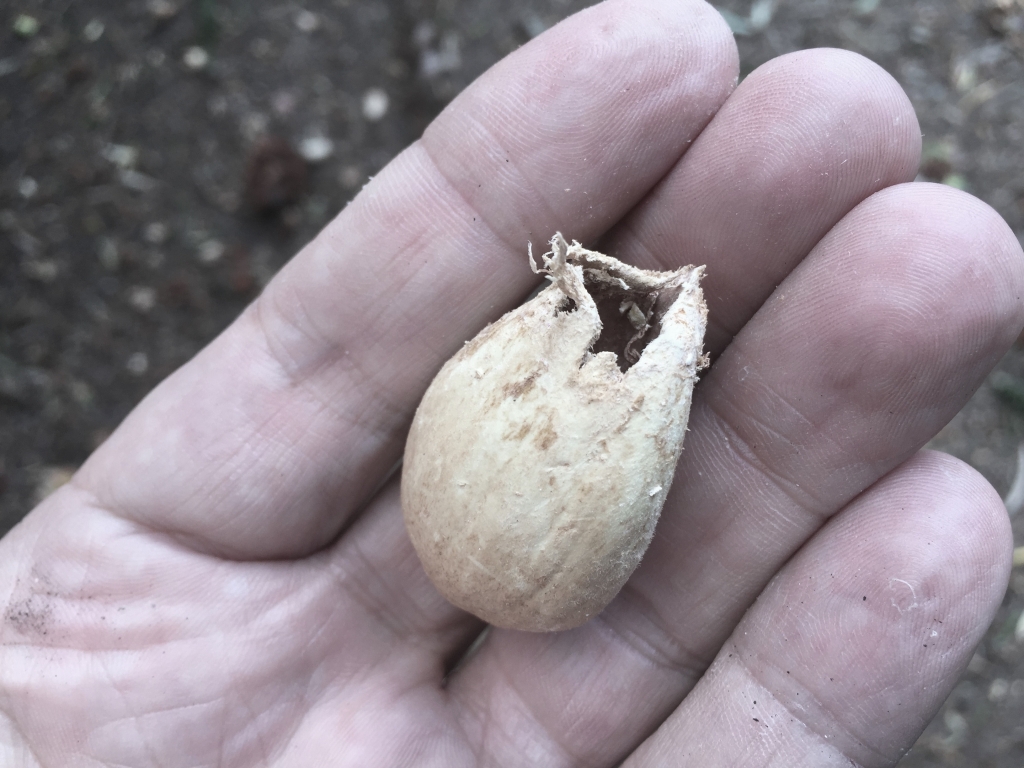
Seed pod emptied by corellas at Elizabeth Farm. Photo (c) Scott Hill for Sydney Living Museums
Though little remains but a husk, the devoured cone then falls as usual. This cone actually had a few seeds remaining:
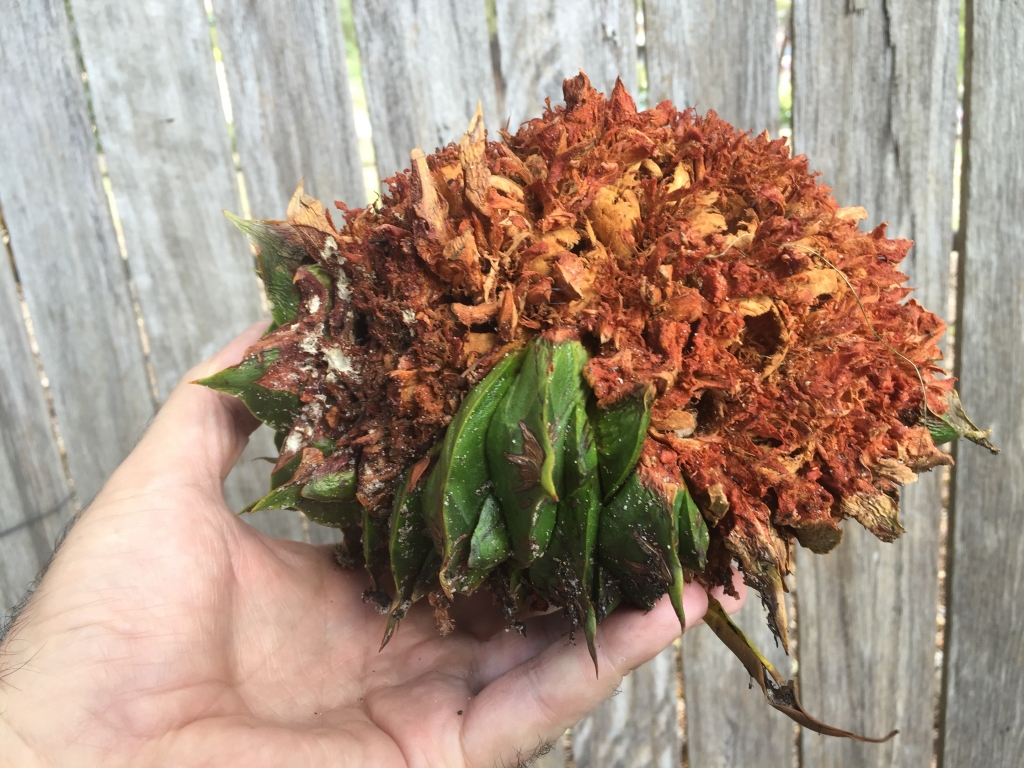
Partially demolished bunya cone at Elizabeth Farm. Photo (c) Scott Hill for Sydney Living Museums
…while even less remains of most of the cones:
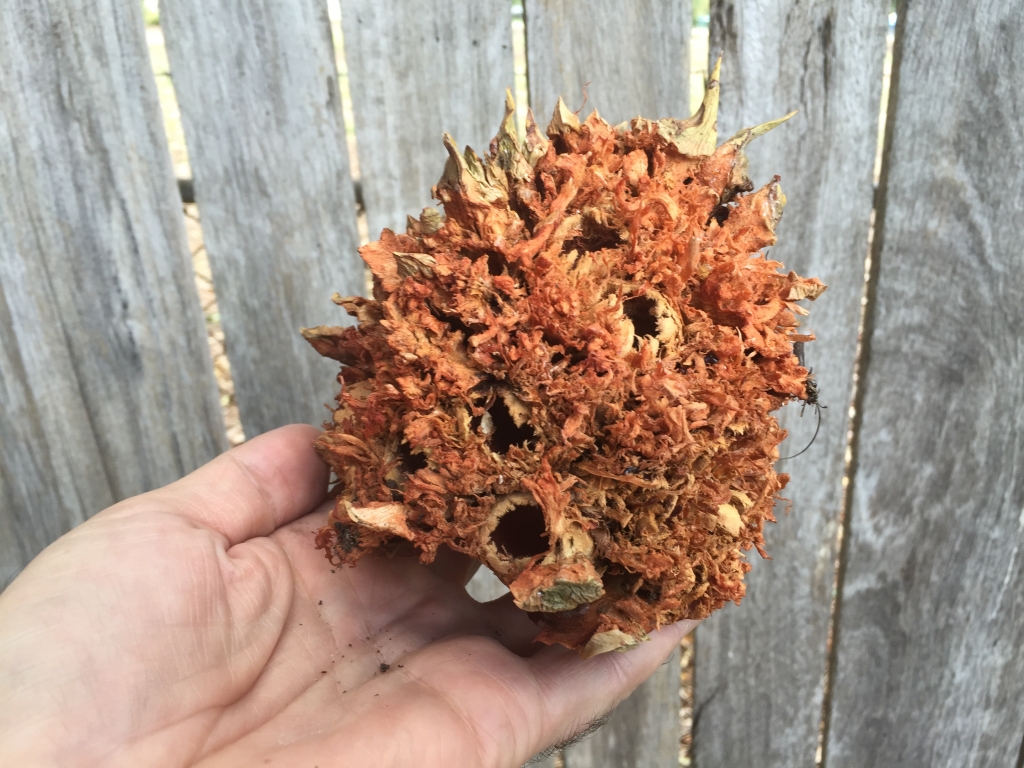
Almost nothing is left of this bunya cone! Photo (c) Scott Hill for Sydney Living Museums
You can revisit the original post, which contains cooking tips for bunya seeds, the imp0rtant story of the cones’ significance in Indigenous culture, and their role in colonial landscapes, here:
